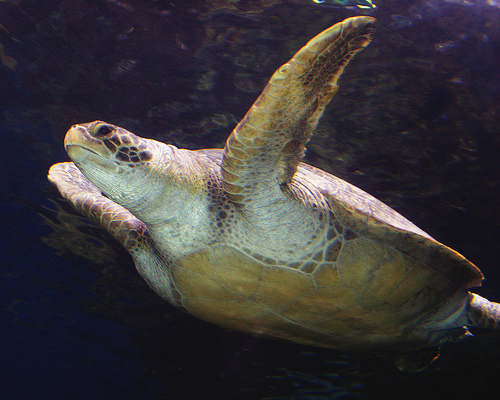
Ralphs
Discount tickets available at Ralphs for a limited time
Learn about the feeding and breeding of these and animals and how we care for them at the Aquarium.
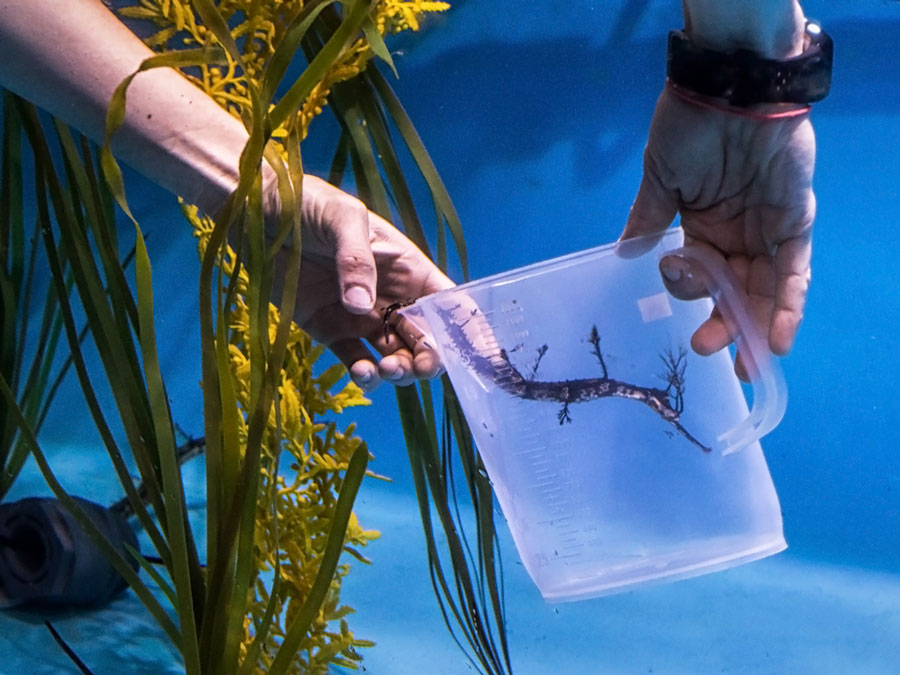
Syngnathids do not have teeth or stomachs. Because they lack stomachs and therefore cannot store nutrients, they eat almost constantly, feeding on mysid shrimp and other small crustaceans, plankton, and larval fish. They use their long, thin, tubular snouts to create a strong suction with which to rapidly intake in their food. The feeding movement of syngnathids is among the fastest-known movement of a vertebrate animal—it takes just six milliseconds for them to suck in food items. They expand a joint on the lower part of their snouts and swallow their prey whole.
Seahorses make a clicking, popping, or chirping noise when feeding caused by the movements of their jaws. Scientists have also observed the noise underwater when the animals are disturbed. At the Aquarium, aquarists report being able to hear the sound and feel the vibrations it causes during feeding times. When about 100 lined seahorses were previously on display, aquarists say the noises could be heard from outside the exhibit.
The Aquarium’s juvenile seadragons and seahorses are fed brine shrimp and rotifers, microscopic animals that are propagated on site. Adults are fed mysid shrimp. The Aquarium’s divers are often able to collect live mysid shrimp locally. Live food is more nutritious and more enriching, because the seahorses and seadragons have to hunt for it. Frozen food is used to ensure a steady supply when live mysid shrimp are not available.
Syngnathids’ natural prey, mysid shrimp, constantly graze in the wild leaving their stomachs packed with nutrients. To replicate this in an aquarium environment, the aquarists have begun to experiment with supplements to the seadragons’ food. The seadragons are also fed more frequently throughout each day than the other syngnathids. The frequent feedings and supplements are implemented to ensure the seadragons have excess energy to put toward reproduction.
In 2002 the Aquarium of the Pacific was the first facility in the world to successfully breed weedy seadragons. Juveniles bred at the Aquarium were distributed to other aquariums and zoos across the United States. Aquarists shared the processes and methods they used with colleagues at other facilities. The Aquarium’s staff members have recently begun to alter various aspects of the seadragons’ habitats to better simulate conditions in the wild and prompt reproductive activity. These efforts include adding new pumps to create a stronger flow of water and specialized lighting to mimic the lunar cycle. Aquarists have also added sargassum, a type of seaweed typically found in wild seadragon habitats, to the Aquarium’s exhibits. The seadragon exhibits are the only places at the Aquarium where flash photography is prohibited because of the animals’ sensitivity to changes in light.
While the Aquarium’s staff has not had success breeding seadragons since that time, they successfully breed seahorses and their relatives like pipefish on a regular basis. At the Aquarium, aquarists report that male seahorses seem to release their young early in the morning. Seahorses form pairs that last the duration of the breeding season. The Aquarium’s staff members who care for seahorses say that it is easy to spot these pairs during the breeding season because they often latch together by their tails and follow each other around the tank. Baby seahorses are on display in the Horses and Dragons exhibits.
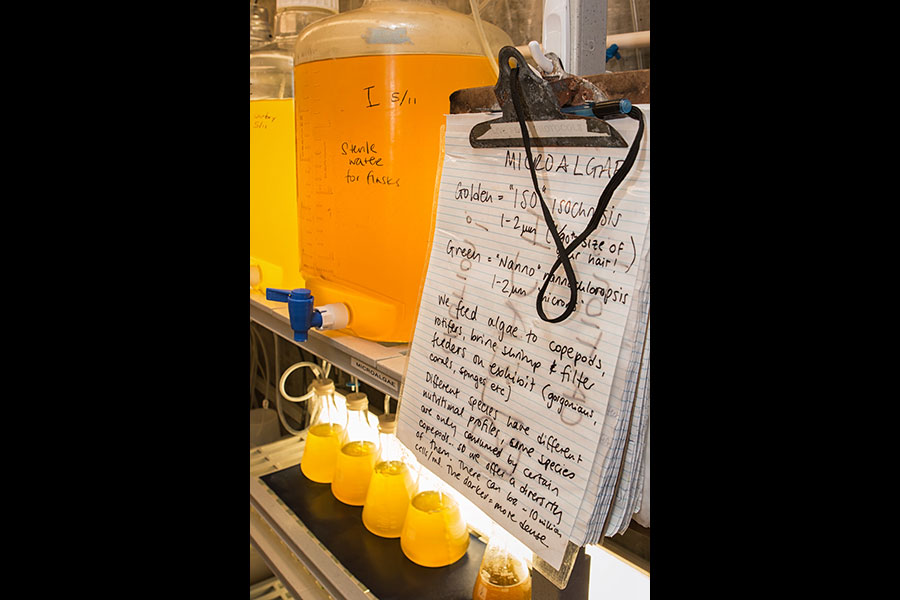
Food items are cultured in the live food lab on site for many of the Aquarium's animals, including syngnathids. Credit: Aquarium of the Pacific/Robin Riggs
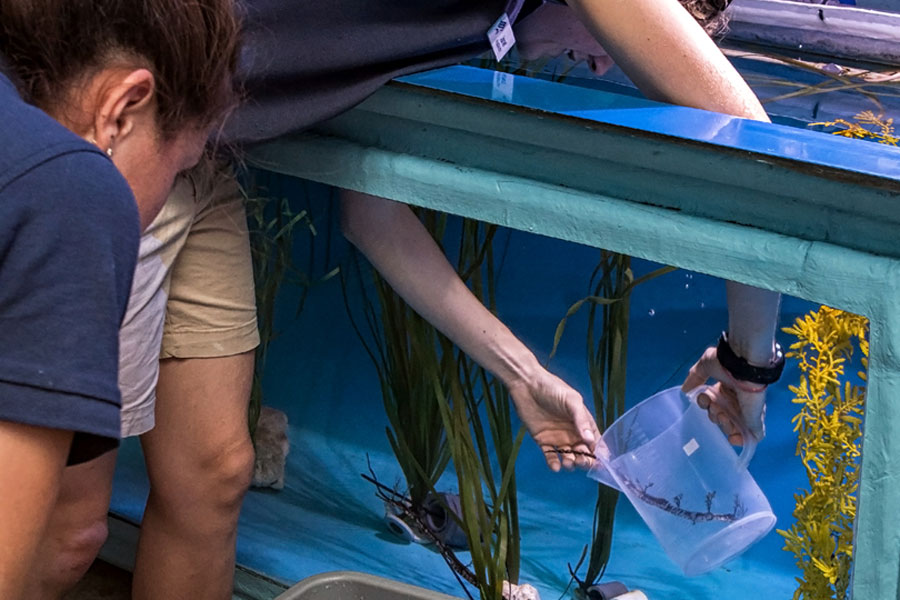
Aquarists work with a ribbon dragon in an area behind the scenes. Credit: Aquarium of the Pacific/Robin Riggs
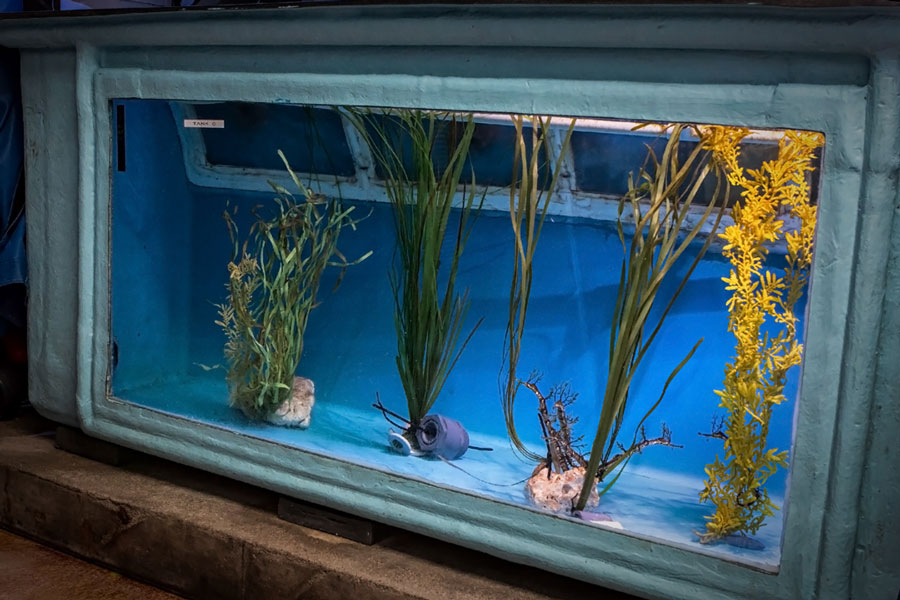
Ribbon dragons were kept in a behind-the-scenes tank before going on exhibit. Credit: Aquarium of the Pacific/Robin Riggs
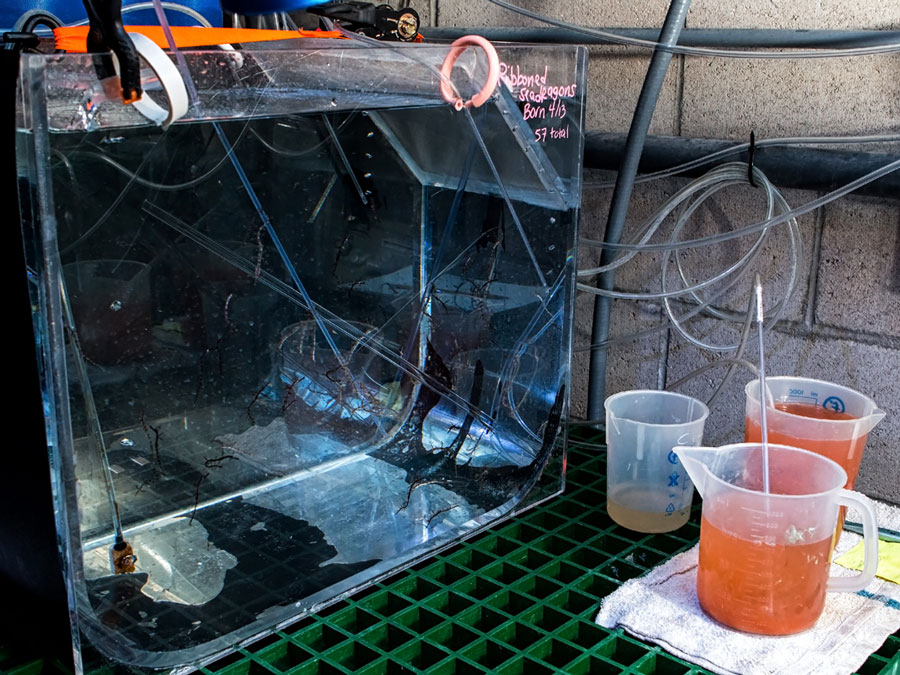
A tank holding baby ribbon dragons is marked with their birth date and number. Credit: Aquarium of the Pacific/Robin Riggs
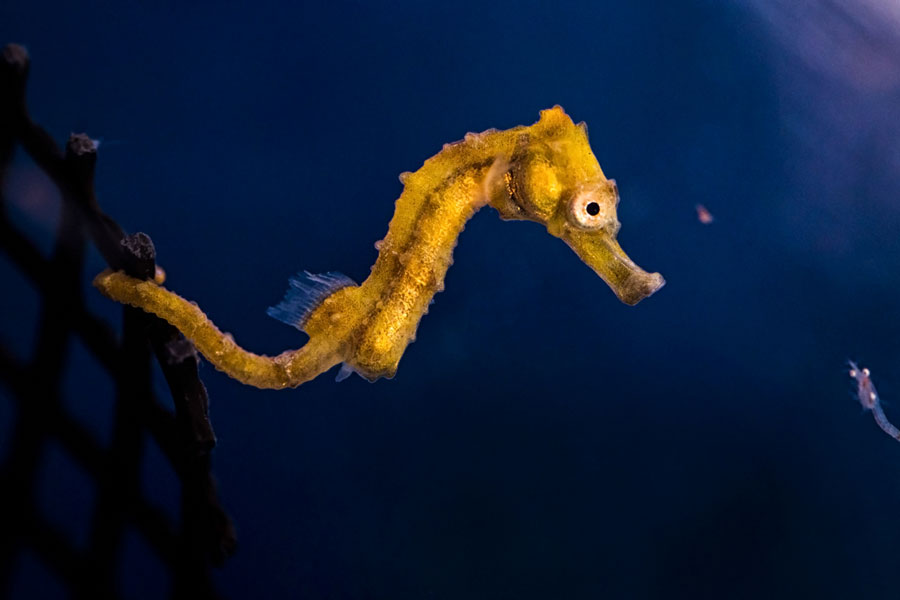
A baby seahorse eyes a mysid shrimp, its prey. Credit: Aquarium of the Pacific/Robin Riggs

Discount tickets available at Ralphs for a limited time